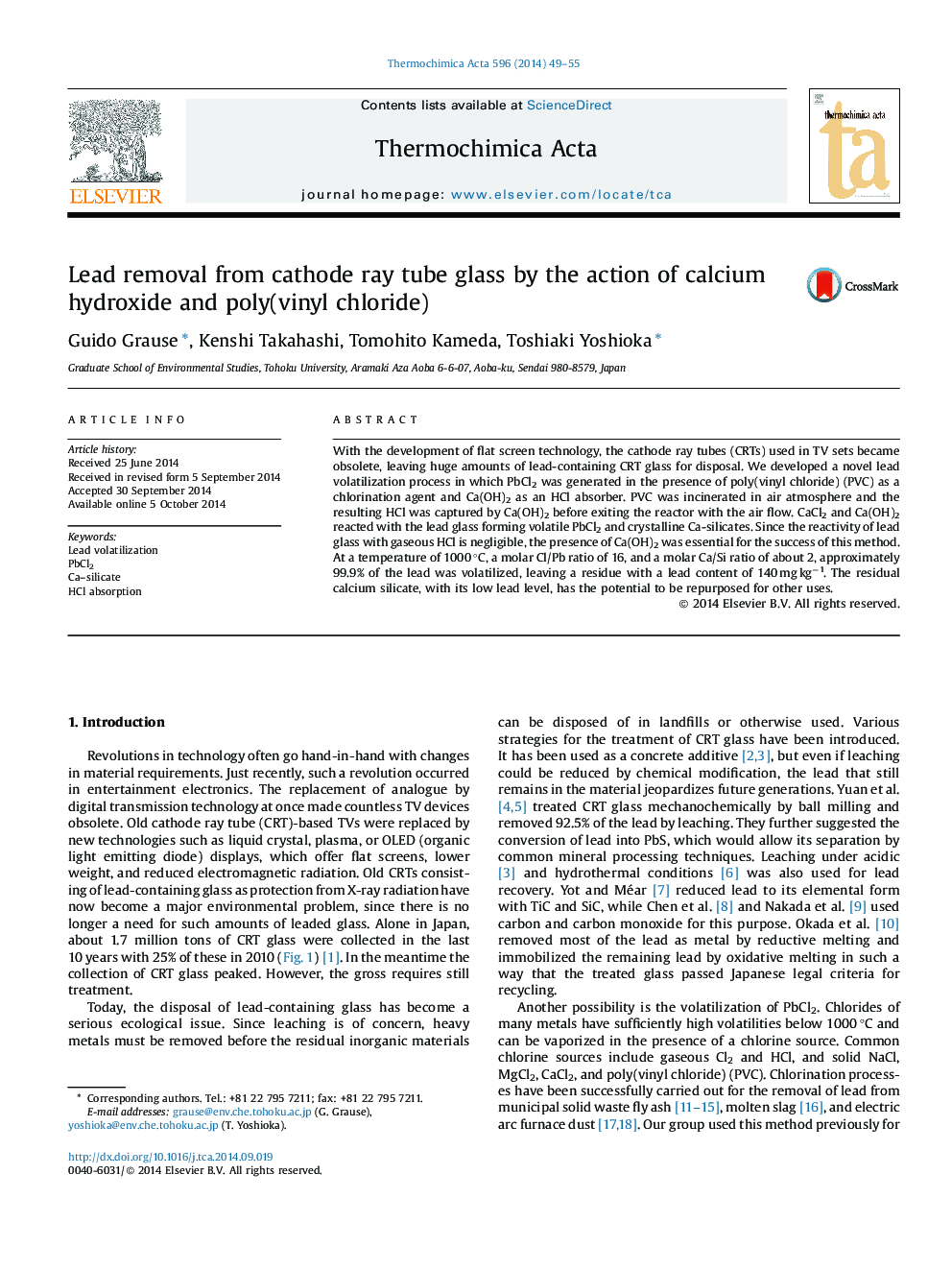| کد مقاله | کد نشریه | سال انتشار | مقاله انگلیسی | نسخه تمام متن |
|---|---|---|---|---|
| 673101 | 1459488 | 2014 | 7 صفحه PDF | دانلود رایگان |
• About 99.9% of lead is removed from CRT glass by PbCl2 volatilization.
• PVC is used as chlorination agent with the aid of Ca(OH)2 as HCl absorbing material.
• The residual calcium silicate has a lead content as low as 140 mg kg−1.
• Lead leaching from the residue was below the detection limit.
With the development of flat screen technology, the cathode ray tubes (CRTs) used in TV sets became obsolete, leaving huge amounts of lead-containing CRT glass for disposal. We developed a novel lead volatilization process in which PbCl2 was generated in the presence of poly(vinyl chloride) (PVC) as a chlorination agent and Ca(OH)2 as an HCl absorber. PVC was incinerated in air atmosphere and the resulting HCl was captured by Ca(OH)2 before exiting the reactor with the air flow. CaCl2 and Ca(OH)2 reacted with the lead glass forming volatile PbCl2 and crystalline Ca-silicates. Since the reactivity of lead glass with gaseous HCl is negligible, the presence of Ca(OH)2 was essential for the success of this method. At a temperature of 1000 °C, a molar Cl/Pb ratio of 16, and a molar Ca/Si ratio of about 2, approximately 99.9% of the lead was volatilized, leaving a residue with a lead content of 140 mg kg−1. The residual calcium silicate, with its low lead level, has the potential to be repurposed for other uses.
Figure optionsDownload as PowerPoint slide
Journal: Thermochimica Acta - Volume 596, 20 November 2014, Pages 49–55
